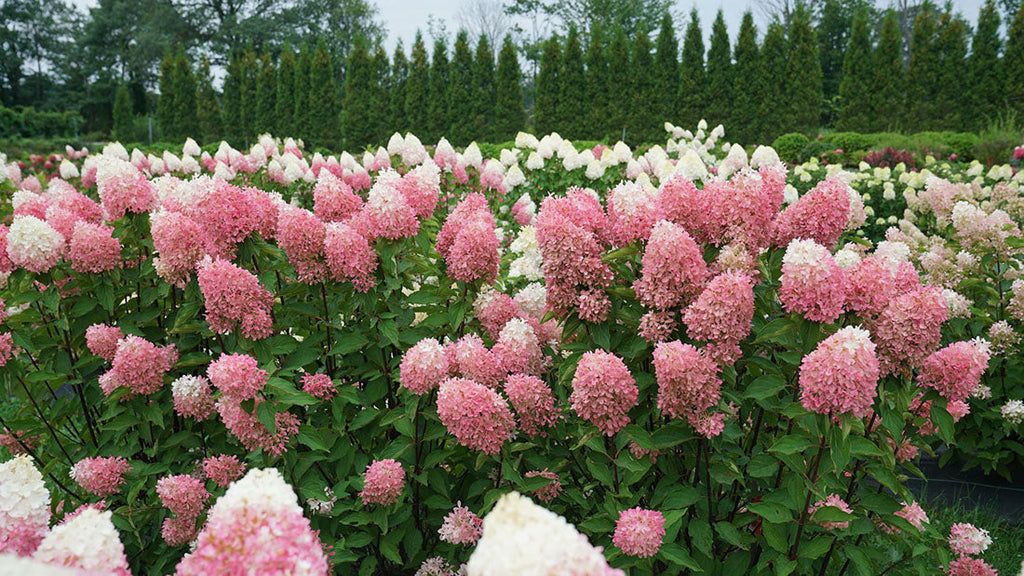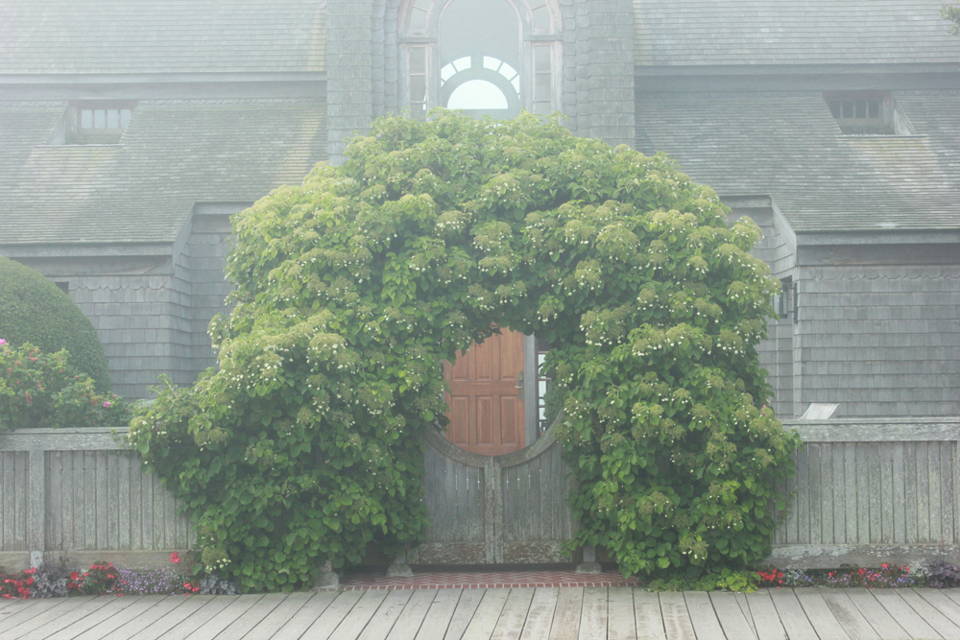Choosing The Right Hydrangea for Your Garden

Hydrangeas are one of the most popular flowering shrubs found in gardens worldwide, and for a good reason. Their large, showy blooms in shades of pink, blue, white, and purple add elegance and beauty to any impactful landscape or stunning flower arrangement. With such a wide array of available varieties, choosing which hydrangea to plant in your garden can be overwhelming. Factors such as the size of your garden, your climate, the amount of sunlight your garden receives, and your personal preferences all come into play when deciding which hydrangea to plant. In this blog, we'll explore collections of hydrangeas that will thrive in different gardening environments. Create a significant impact in your garden, and read on to find your perfect match!
If You're Looking For Heat-Tolerant Hydrangeas

These types of hydrangeas are native to warmer climates in the eastern and southern portions of the United states, so they can take the heat and extended periods of drought. Though it's important to keep in mind that heat and drought-tolerant hydrangeas do often benefit from some afternoon shade in especially warm climates, most often in zones 7-9. Some of the most popular heat-tolerant varieties include the bigleaf hydrangeas (Hydrangea macrophylla) in the Let's Dance series and smooth hydrangeas (Hydrangea arborescens) in the Incrediball series.
Even for heat-tolerant hydrangeas, the summer heat can cause some trouble. Gardeners should avoid planting heat tolerant hydrangeas in areas with poor air circulation, as this can increase the likelihood of powdery mildew. But this is few and far in between. So, if you want to add a splash of color to your garden, even during the hottest of summers, heat-tolerant hydrangeas are a great option that won't wilt under the pressure!
Shop Heat-Tolerant Hydrangeas:
If You're Looking For Hydrangeas For The Shade

No shade to the other plants, but these hydrangeas flourish with less sunlight than the rest! For gardeners with shaded areas, hydrangeas can be an excellent choice for adding color and beauty to their landscape. Some of the best hydrangeas for shaded areas include the oakleaf hydrangea (Hydrangea quercifolia), the bigleaf hydrangea (Hydrangea macrophylla), and climbing hydrangea (Hydrangea petiolaris). When planting hydrangeas in shaded areas, choosing a location that provides partial or dappled sunlight is essential. While some hydrangea varieties can tolerate full shade, most preferably at least a few daylight hours each day. It's also important to provide these plants with well-draining soil and regular water, particularly during drought or extreme heat.
One of the benefits of hydrangeas for shaded areas is their ability to thrive in cool and moist soils. Shaded areas are also often cooler than full-sun areas, which can benefit hydrangeas, particularly during hot summer months. Additionally, shadowed sites can help extend the blooming period for some hydrangea varieties, allowing them to produce flowers for a more extended period.
Shop Hydrangeas For The Shade:
If You're Looking For Cold-Tolerant Hydrangeas

Not only do these hydrangeas look cool as a cucumber, they also thrive in cooler temperatures. These hydrangeas are able to withstand temperatures as low as -30°F, making them a hardy and reliable addition even in zone 3. Some of the most popular cold hardy hydrangeas include the smooth hydrangea (Hydrangea arborescens) and panicle hydrangea (Hydrangea paniculata).
When planting cold hardy hydrangeas, it's important to choose a location that provides ample sunlight and well-draining soil. These hydrangeas can be sensitive to waterlogged soil, so it's important to avoid planting them in areas with poor drainage. Additionally, it's important to provide these plants with regular water, particularly during periods of drought or extreme heat. No matter how chilly it might get, you can still enjoy this classic garden addition!
Shop Cold-Tolerant Hydrangeas:
If You Need Compact Hydrangeas (for small spaces!)

When you think of hydrangeas, bodacious blooms on large shrubs come to mind. This notion leaves gardeners with small spaces fearing they may need more room for hydrangeas. But this is furthest from the truth! Compact hydrangeas are an excellent choice for gardeners who are short on space but still want to enjoy the beauty and benefits of these popular flowering shrubs. Dwarf hydrangeas can grow to be 3ft or under naturally, no need to cut them down to size. However, to ensure that your compact hydrangeas thrive, providing them with the right growing conditions is essential. Most hydrangeas prefer well-draining soil and require regular watering, particularly during hot, dry weather. They also benefit from occasional pruning to promote new growth and prevent overcrowding.
Little Quick Fire panicle hydrangea (Hydrangea paniculata) is one of the most popular compact hydrangeas. This variety produces a profusion of white flowers that gradually turn pink as they mature, and its compact size makes it perfect for small gardens or containers. Try tucking these space-saving hydrangeas in empty spots in your garden, adding to your patio, or planting in a window flowerbed for major curb appeal. Remember, it's always best to plant small hydrangea varieties instead of pruning larger varieties down to size, so consider starting fresh with new plants.
Shop Hydrangeas For Containers & Small Spaces:
If You're Looking For Colorful Hydrangeas

Are you looking to create a vibrant garden landscape with an array of colors? Look no further: hydrangeas come in unique shapes and colors, including shades of green, pink, purple, blue, white, and everything in between. Choosing colorful hydrangeas can add a striking visual element to your garden, whether you want to create a cohesive color scheme or add a pop of color to your yard. The color combinations are nearly endless!
One of the most popular types of hydrangeas is the bigleaf hydrangea(Hydrangea macrophylla), which produces large, round clusters of blooms in shades of pink, blue, and purple. The color of these blooms is determined by the soil's pH and aluminum availability, with acidic soil producing blue flowers and alkaline soil creating pink ones. This can be a fun way to experiment with the color of your hydrangeas, as you can adjust the pH of your soil to produce your desired shade. Another great option for colorful hydrangeas is the panicle hydrangea (Hydrangea paniculata), which has cone-shaped clusters of white, pink, or greenish-white flowers. Their flower colors don't depend on the soil, but they naturally change colors as they age.
Shop Colorful Hydrangea Varieties:
If You're Searching For Climbing Hydrangeas

Climbing hydrangeas (Hydrangea petiolaris) are a popular and versatile flowering vine that can add a stunning visual element to your garden. Some of these vines can grow up to 80 feet long, making them ideal for covering walls, trellises, and arbors. They are also suitable for adding texture and pollinator interest to patios and shaded areas. Climbing hydrangeas are known to be lighter than other woody vines, making them a safer choice for climbing structures or large trees. Try planting alongside fences or use a trellis to keep upright in containers in areas of full sun or partial shade.
Don't be confused, though false hydrangea vines look like climbing hydrangeas, they really are false. They're technically not even hydrangeas at all. False hydrangea vines (Schizophragma hydrangeoides) have subtle differences, but add just as much charm. Try planting Rose Sensation™ false hydrangea vine for a pop of color with marbled pink flowers.
While climbing hydrangeas soar, they typically like temperatures to stay cool, around 70 degrees Fahrenheit. So, just like your other hydrangea plants, keep the soil moist, and they'll give you elegant blooms for years to come. Just remember to be patient! Climbing hydrangea plants can grow slower than other hydrangea varieties and can take up to 5 years to become fully established. But that's okay; these hydrangeas reach new heights of beauty and are well worth the wait.
Shop Climbing Hydrangeas:
If You Want To Build a Privacy Screen With Hydrangeas

Hydrangeas are a great choice for those looking to create privacy screens or fences in their outdoor spaces. These plants are known for their beautiful blooms and dense foliage, making them perfect for creating a natural barrier between your property and the outside world. One of the benefits of using hydrangeas for privacy screens is that they come in a variety of sizes, from smaller shrubs to larger climbers. This means you can choose the right size plant for your specific needs, whether you're looking to block out a neighbor's view or simply create a more intimate space in your own garden.
When it comes to choosing the right type of hydrangea for creating privacy screens and fences, there are several options to consider. One popular choice is the panicle hydrangea (Hydrangea paniculata), which is a large shrub with cone-shaped flowers that turn from white to pink to burgundy as they mature. Panicle hydrangeas are great for privacy screens because they can grow up to 15 feet tall and are relatively easy to care for. 'Limelight' hydrangea is one of the most popular choices with lime-green flowers that turn pink as they mature and can grow up to 6 feet tall. It's a great option for those looking to create a small hedge or more intimate space in their outdoor area. Because hydrangeas will loose their foliage come fall, find evergreen companion plants to join alongside them to maintain a privacy screen even during the cooler months. Privacy screens never looked this stunning!
Shop Hydrangeas For Privacy:
If You're Building a Pollinator Garden

Hydrangeas are not typically the first thing that comes to mind when building a pollinator garden, but some varieties are adored by bees and butterflies alike. Lacecap hydrangea varieties are the most popular amongst pollinators, with their fertile florets more separated than compact, providing easy access to rich nectar and pollen. Panicle hydrangeas (Hydrangea paniculata) like Pinky Winky®, Quick Fire®, and Little Quick Fire® are sure to keep the pollinators buzzing. The two-toned flowers and easy-to-grow nature of these varieties make them a popular choice amongst gardeners too!
To ensure that your hydrangeas are as beneficial to pollinators as possible, it's essential to plant them in a sunny location with well-draining soil. Regular pruning and deadheading can also promote new growth and encourage the production of more blooms, which will attract more pollinators. With the proper care and attention, hydrangeas can be a beautiful and valuable addition to any pollinator garden, providing a much-needed food source for these vital creatures.
